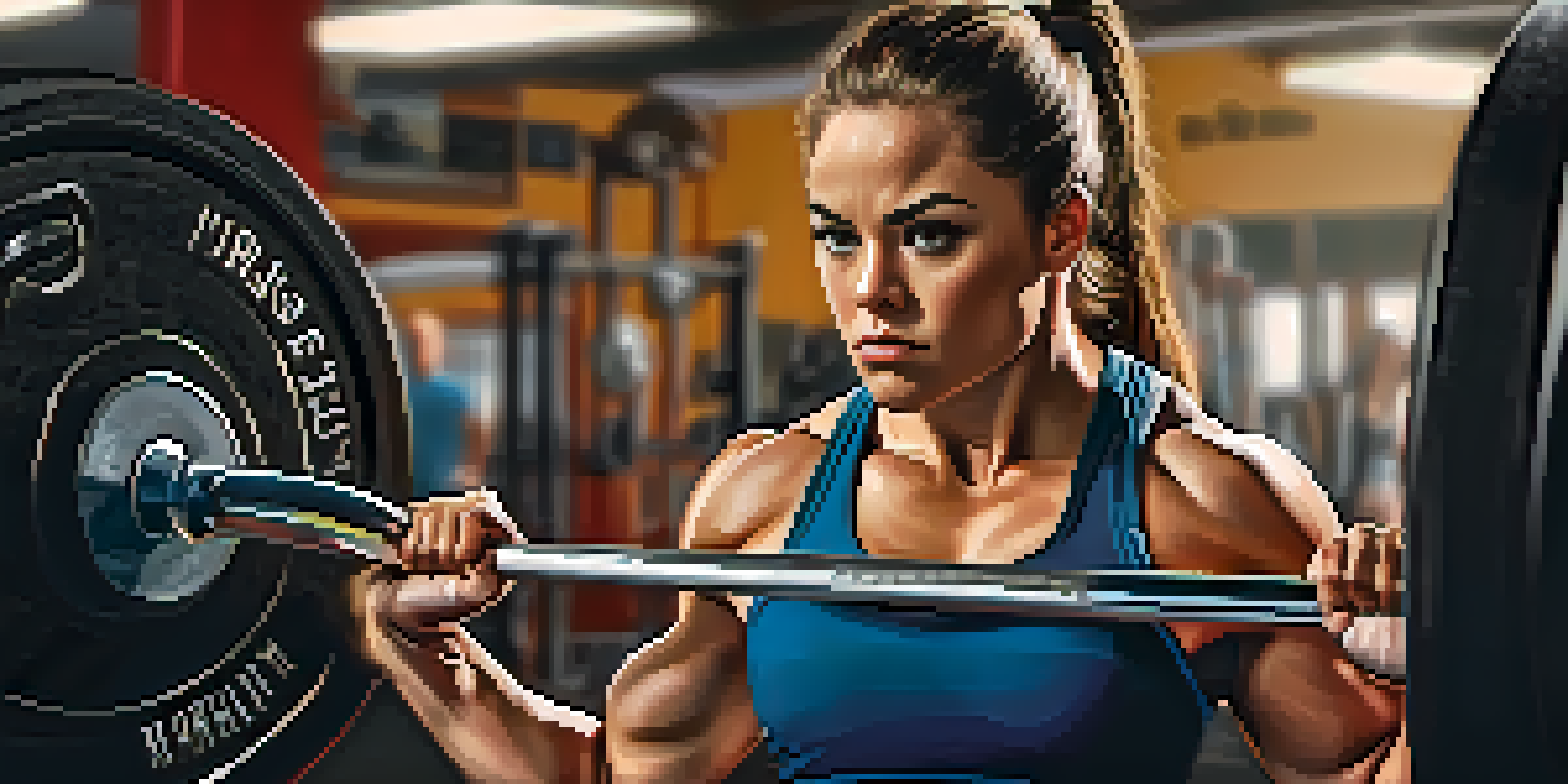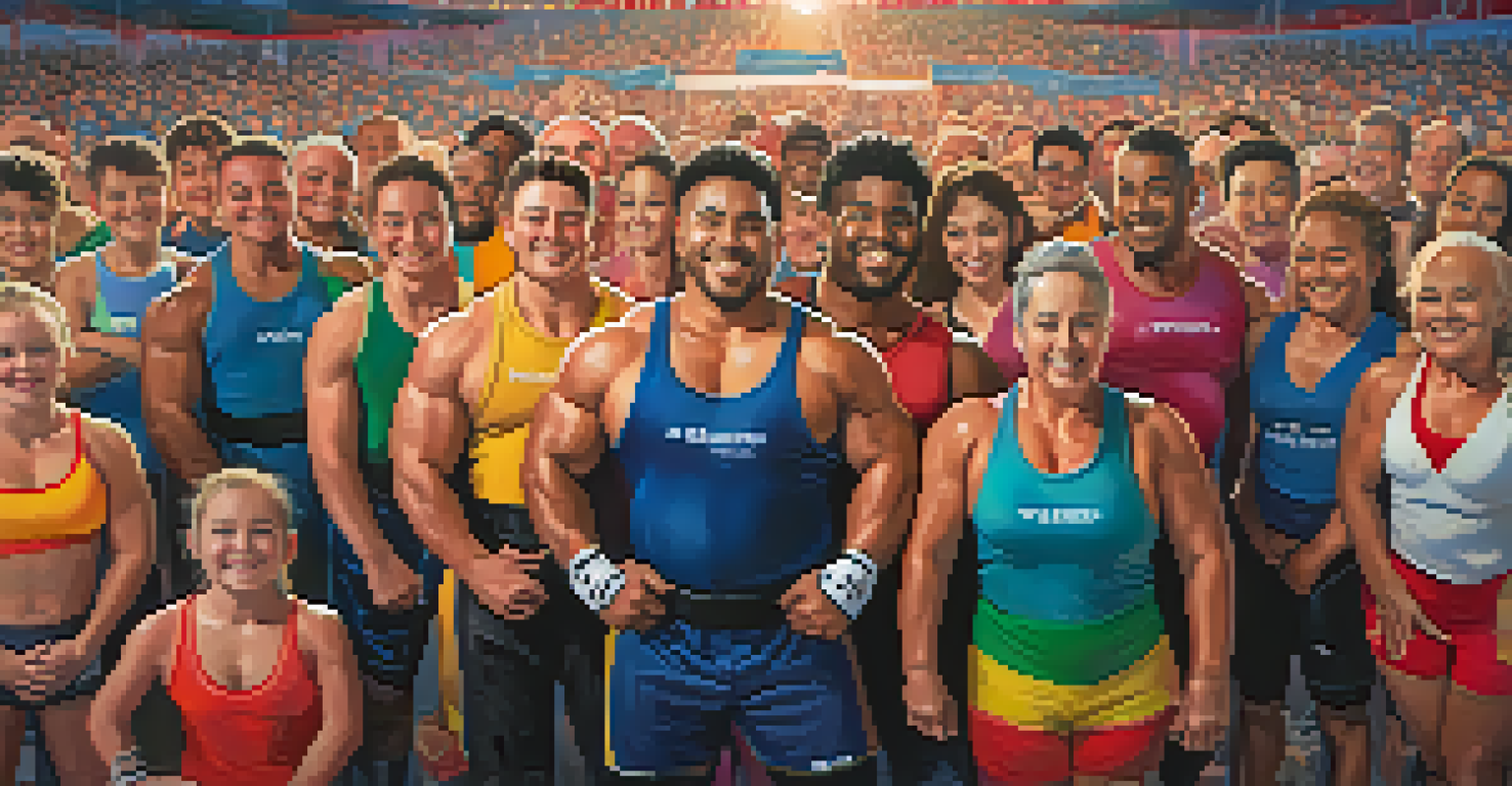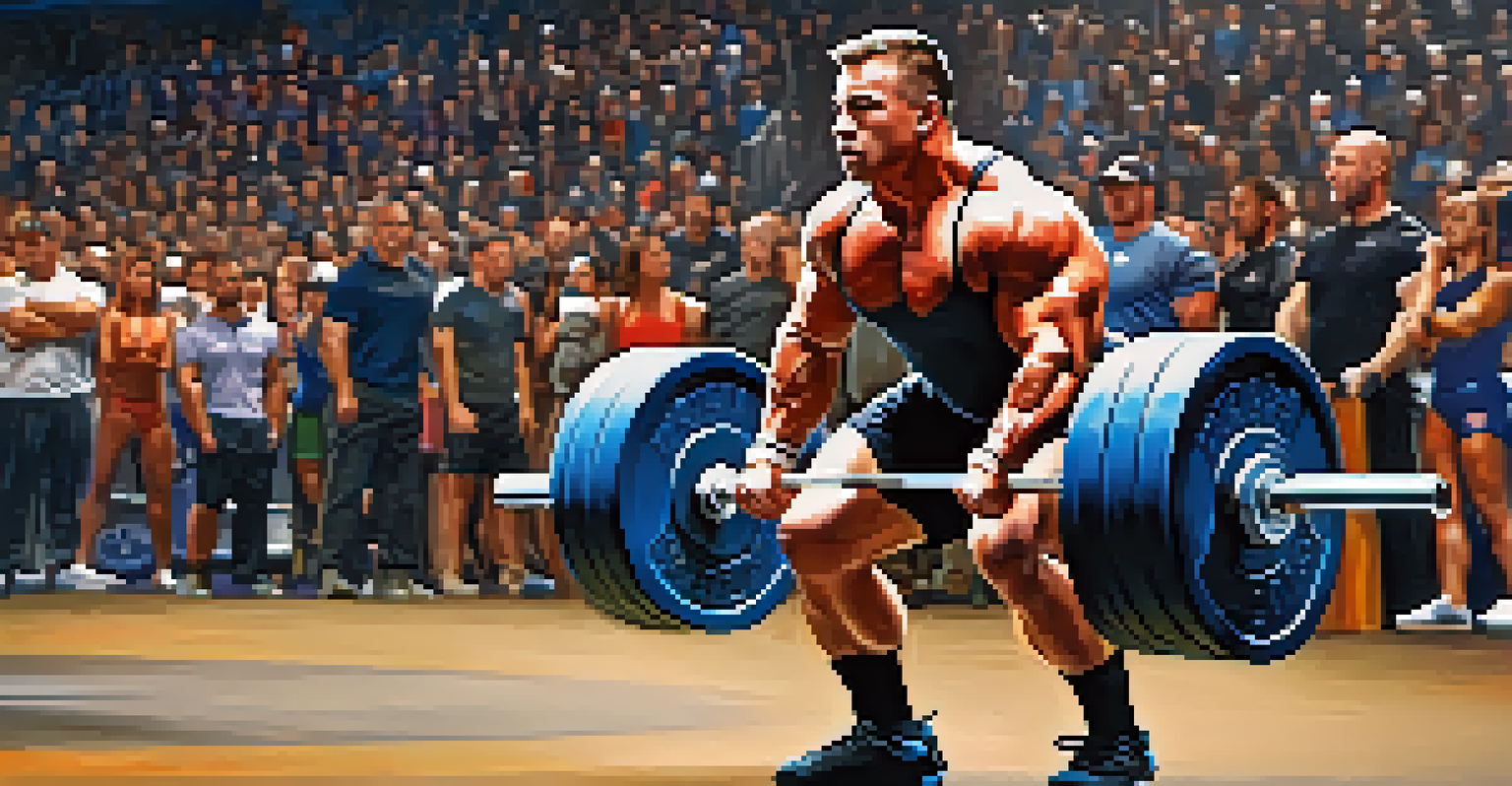Media Representation of Powerlifting: From Niche to Mainstream

The Evolution of Powerlifting in Media Coverage
Powerlifting, once a niche sport, has gradually gained traction in mainstream media. In the early days, coverage was limited to specialized publications and local competitions, often overshadowed by more popular sports. However, with the rise of social media and streaming platforms, powerlifting events began to reach a broader audience, showcasing the strength and dedication of athletes.
Strength does not come from physical capacity. It comes from an indomitable will.
As platforms like YouTube and Instagram became popular, lifters started sharing their training journeys, which helped demystify the sport. This personal storytelling fostered a sense of community and attracted newcomers who were curious about powerlifting. The visual appeal of heavy lifts and dramatic transformations captured the attention of viewers, making it more relatable and accessible.
Today, powerlifting competitions are regularly featured on larger sports networks and online media. This transition reflects a shift in how strength sports are perceived, moving from a niche interest to a more mainstream phenomenon. The growing visibility has not only increased participation but has also encouraged sponsors and brands to invest in powerlifting events.
Breaking Stereotypes: Diverse Representation in Powerlifting
One of the most significant changes in the media representation of powerlifting is the increased diversity among athletes. Historically, the sport was often associated with a specific demographic, but today it showcases individuals from various backgrounds, ages, and body types. This shift is crucial for breaking stereotypes and inviting a broader audience to engage with the sport.

Media coverage now highlights female powerlifters, LGBTQ+ athletes, and individuals with disabilities, reflecting a more inclusive landscape. By sharing these stories, the media challenges outdated notions of strength and encourages everyone to explore their potential, regardless of societal expectations. This representation fosters a sense of belonging and inspires many to take up the sport.
Powerlifting's Rise in Media Coverage
The sport has transitioned from niche publications to mainstream visibility, thanks to social media and streaming platforms.
The impact of this diverse representation extends beyond powerlifting itself; it encourages discussions about body positivity and self-acceptance. As more athletes share their journeys, viewers see that strength comes in many forms, which can inspire others to embrace their unique paths in fitness and health.
The Role of Social Media in Powerlifting's Popularity
Social media has played a pivotal role in propelling powerlifting into the public eye. Platforms like Instagram and TikTok allow athletes to connect directly with fans, share their training routines, and celebrate their achievements in real-time. This immediacy creates an engaging environment that keeps audiences invested in the sport.
The only limit to our realization of tomorrow will be our doubts of today.
Through hashtags and challenges, lifters can participate in global conversations, sparking interest in powerlifting among those who may have never considered it before. The viral nature of social media content means that impressive lifts and motivational stories can reach millions, inspiring viewers to try powerlifting for themselves. This organic growth has solidified powerlifting's place in contemporary fitness culture.
Moreover, social media serves as a platform for education, where experienced lifters can offer tips and advice to newcomers. This accessibility breaks down barriers and makes powerlifting more approachable. As athletes share their insights, the community grows stronger, leading to increased participation and interest in competitions.
The Impact of Mainstream Events on Powerlifting's Visibility
The rise of mainstream competitions has significantly boosted the visibility of powerlifting. Events like the World’s Strongest Man and national championships are now televised, showcasing the incredible feats of strength performed by athletes. This exposure allows fans to witness the intensity and discipline required for the sport, drawing in a wider audience.
In addition, collaborations with other popular sports events, like CrossFit, have introduced powerlifting to new fans who may not have been exposed to it otherwise. These partnerships help normalize powerlifting within the broader fitness community and foster a sense of camaraderie among athletes of different disciplines.
Diversity in Powerlifting Representation
Increased media focus on diverse athletes is challenging stereotypes and inviting broader engagement with the sport.
As more viewers tune in to watch these competitions, it creates a ripple effect that encourages participation at the grassroots level. Local gyms are seeing increased interest in powerlifting classes and competitions, helping to cultivate the next generation of lifters while further solidifying the sport's mainstream status.
The Influence of Documentaries and Reality Shows
Documentaries and reality shows that focus on powerlifting have played a crucial role in its rise to fame. These productions often highlight the personal stories of athletes, delving into their motivations, challenges, and triumphs. By doing so, they humanize the sport and make it relatable to viewers who may not be familiar with powerlifting.
Shows like 'The World's Strongest Man' not only showcase incredible lifting but also emphasize the dedication and hard work behind the scenes. This behind-the-curtain look fosters a deeper appreciation for the sport and its athletes, making it more appealing to audiences. Viewers become invested in the lifters' journeys, leading to increased support for the sport.
Additionally, the success of these shows has encouraged the production of more content centered around strength sports. As media outlets recognize the popularity of powerlifting-themed programming, they are more likely to allocate resources for further coverage, thus perpetuating a cycle of visibility and engagement.
The Role of Influencers in Powerlifting's Growth
Influencers in the fitness community have significantly impacted the growth of powerlifting. Many powerlifters have cultivated large followings on platforms like Instagram, YouTube, and TikTok, where they share their training routines, nutrition tips, and personal experiences. Their relatable content resonates with audiences and motivates individuals to explore powerlifting themselves.
By showcasing their journey, these influencers demystify the sport and break down the barriers that might prevent someone from trying it. They provide a sense of community through shared struggles and successes, making powerlifting feel accessible to everyone. This sense of connection encourages more people to participate in the sport, contributing to its growing popularity.
Influencers Boost Powerlifting's Appeal
Fitness influencers are making powerlifting more relatable and accessible, driving greater interest and participation.
Moreover, collaborations between influencers and brands have led to increased visibility for powerlifting-related products and events. As influencers promote gear, competitions, and training programs, they help legitimize the sport in the eyes of their followers, further solidifying powerlifting's status in mainstream fitness culture.
Challenges and Opportunities for Powerlifting in Media
Despite its rise in popularity, powerlifting still faces challenges in media representation. While there is increased coverage of competitions, there is often a lack of in-depth analysis or storytelling that captures the essence of the sport. This gap presents an opportunity for media outlets to develop more engaging content that highlights the dedication and passion of athletes.
Another challenge is the potential for misinformation or misrepresentation, particularly regarding training techniques and safety. As powerlifting continues to grow, it’s essential for content creators to prioritize accuracy and provide valuable resources for both newcomers and seasoned lifters. This commitment to quality can help establish powerlifting as a respected and credible sport.

However, the opportunities are vast. As the sport continues to gain traction, there is significant potential for collaborations with mainstream fitness brands, increased sponsorships, and greater media coverage. By addressing its challenges head-on, the powerlifting community can continue to thrive and inspire future generations of athletes.